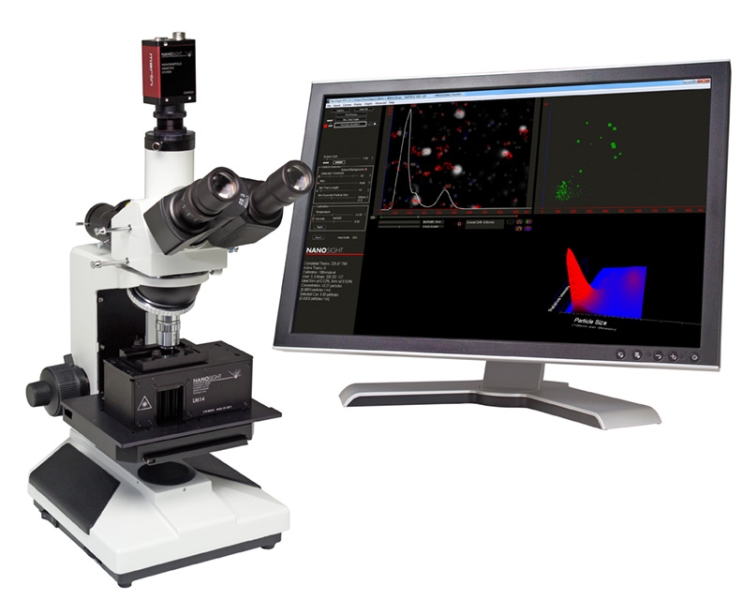Nanoparticle Tracking Analysis (NTA)
Nanoparticle Tracking Analysis (NTA) is a technique for sizing nanoparticles (such as vesicles) in solution. Common NTA platforms include the Particle Metrix ZetaView® and the Malvern Nanosight®. NTA estimates size based upon Brownian Motion (all you’ll ever want to know about that here). In brief, as light excites small particles, their size can be estimated based on their motion. NTA takes short videos of small particles under magnification following excitation with a laser – just like the one playing in the background. This video is from NTA validation of our Lipo100™ EV size standard which is used in a calibration workflow to convert vFRed™ fluorescence into size when running vFC™. Multiple videos are then analyzed by software that tracks the motion of individual small particles and estimates their sizes which are then plotted as a histogram. Concentration can also be estimated using this technique based on known volume of sample in the analysis chamber.
Limitations of NTA for EV Measurement
- Low throughput (low number of nanoparticles and lengthy setup and data acquisition)
- Non-EV specific – Measures all particles. Struggles with crude samples.
- Extremely limited cargo analysis
- Fluorescence sensitivity is poorly characterized and likely worse than other available approaches
- Inconsistent concentration measurements
- Leads to inconsistent downstream functional studies
Nanoparticle Size and Concentration Determination via NTA – Example Protocol
Instrument
- NanoSight™ LM-10 (Malvern) equipped with a 532 nm laser, sCMOS camera and a syringe pump.
Sample Prep
Enriched EVs. Samples to be analyzed via NTA must contain highly enriched EVs of interest as the system struggles with complex samples like plasma.
Data Acquisition
- Aquire 10 videos at 10 seconds each per sample.
- Using syringe pump, introduce a new volume of sample into the field of view between each acquisition.
- Acquisition settings: camera level 16, detection threshold 6, with maximum jump length, blur, and min track length all set to Auto.
- Using syringe pump, introduce a new volume of sample into the field of view between each acquisition.
Data Analysis
- Analyze data using NanoSight software (version 3.2).
